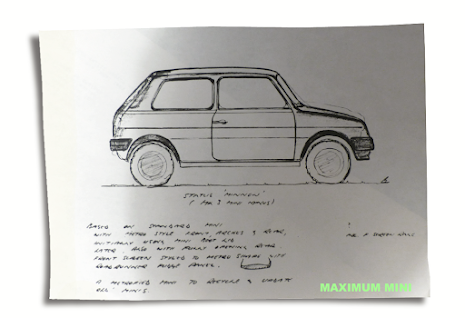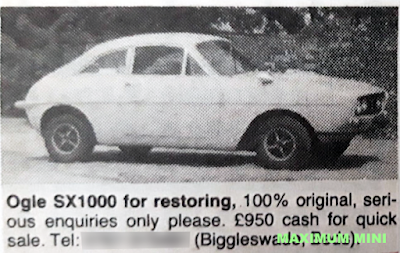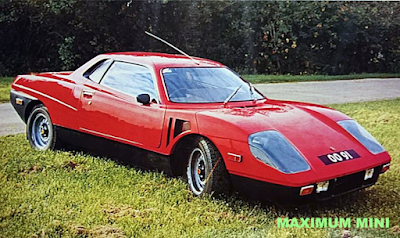Deep Sanderson 301s gets a regular mention here (click!) but how about the open-top prototype preceding the production model? I found that there's not even a single post dedicated to that intriguing little car. Time to set that straight. Let's start with some pictures of the car when it was just finished and hadn't even been painted and some information from the horses mouth, quoted from Christopher Lawrence's biography 'Morgan Maverick':
"In the autumn of 1960, after the technical success of the Lawrence Link Formula Junior, Len Bridge became very determined that we should all our acquired experience by putting it into the design of a two-seater road car as an attempt at some serious production. He thought the market for racing cars was limited and already well catered for, but that there were many more people out there who bought two-seater sports cars for the road. I was not all that keen at first, but warmed to the idea after discussing it with an old friend from my Navy days, Andrew Wallace. (...) He studies my Lawrence Link suspension and proposed a sheet metal construction with a central backbone or tunnel. Len Bridge was keen to use the Mini engine which was all the rage at the time, but fitted in the rear. Andrew then took a real interest in the idea and drew up a suggested chassis design that was as original as the suspension. With some re-arrangement for practical reasons, that is what the prototype Deep Sanderson 301 was based on.
"Our first attempt at the bodywork, built for us by Charlie Williams at Williams and Pritchard, was not very clever. Ugly but functional, you might say, with its ultra light backbone chassis, all in 20 gauge steel, and his aluminium body, it was very snappy despite only having an 850ccc engine."
The car went on to the Racing Car Show and made it to a number of races before being crashed and written off. More on that is soon to follow.




























